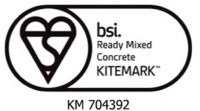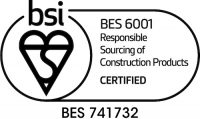If you are working on a concreting project over the cold, winter months, it is important to know the whys and wherefores of pouring concrete in dropping temperatures. Here, we go through some of the tips and techniques that anyone embarking on a concreting project this winter should be aware of.

1) Schedule the concrete pour in advance
Ensure that you contact your concrete ready mix company in advance of the day you require the pour to be carried out. This can be a couple of days, or more like a week if you want to be really organised. In the cold weather, there may be some days where it could be too cold to pour at all, so giving them plenty of notice is always a good idea so they can plan accordingly.

2) The temperature the day of the pour
As mentioned above, the temperature on the actual day of the concrete pour is key in its effectiveness. The air temperature should be at least 3 degrees, and this is because the key when pouring concrete is to avoid ice forming within the mix as this will compromise the strength of the concrete. Further to this, you should never pour on top of ice or frost either.

3) Is the sub base frozen?
It is important to check the sub base for frost before beginning a pour. There are, however, measures to try and keep frost levels at bay in the sub base, such as using insulating blankets to protect the dirt from freezing. This can be done just before the pour or weeks/months in advance. If, however, your sub-base was prepared well in advance and you do not use a blanket to insulate it and frost does form, you can use ground heaters to thaw the dirt prior to the pour.

4) What is the sub-base?
The sub-base is the surface onto which you’ll be pouring the concrete. The temperature will affect different materials in different ways.
– If you pour straight onto dirt or a plastic vapour barrier, the cold sub-base will take no time at all in drawing the heat out of the concrete, so never pour onto this sub-base surface unless the temperature is above 3C.
– If, however, you are pouring onto styrofoam, this material can help concrete hold its temperature for longer so in this instance the concrete can be poured at slightly lower temperatures.

5) Wear the appropriate clothing
An obvious consideration to make, the appropriate clothing is a real help when it comes to performing a concrete pour in brutal temperatures. Lots of layers are a great idea, as they can be removed and replaced accordingly as your internal temperature adjusts throughout the duration of the pour.

6) Have helpers on hand
As the old saying goes, ‘many hands make light work’, and this is indeed the case when it comes to pouring concrete. A few extra people can really help speed up the process in the cold weather when it comes down to offloading the concrete from the truck as quickly as possible.

7) Have some temporary heat on standby
For a real treat, you could even boost the morale of your workers with a small heater hooked up to a vehicle’s generator for power or even to a house’s mains.

8) How long will I have to wait before it’s dry?
The drying and curing process is straightforward so long as all conditions are met, but this is a topic which will be covered in further detail next month.

9) Lastly, protect your concrete from freezing
Once the concrete is laid and levelled, it is important to remember to protect the surface from freezing over, so be sure to put a blanket over the final result to ensure it does not freeze over.
Here at Easymix Concrete, we are proud to supply high quality concrete for domestic and commercial DIY jobs, as well as providing a competitively priced pouring service for all of our customers. For more information on these or any of our other services, get in touch with our friendly team of professionals today and we’ll be happy to help assist in any way we can.



